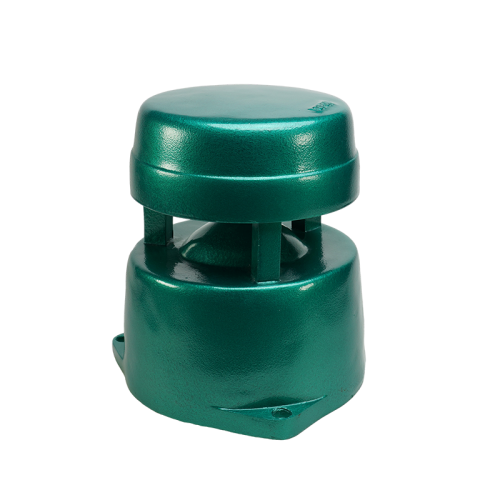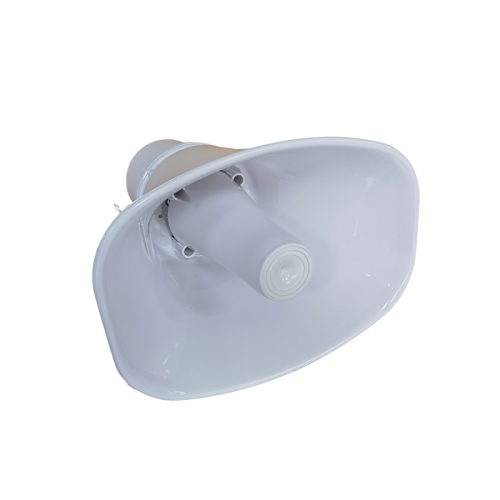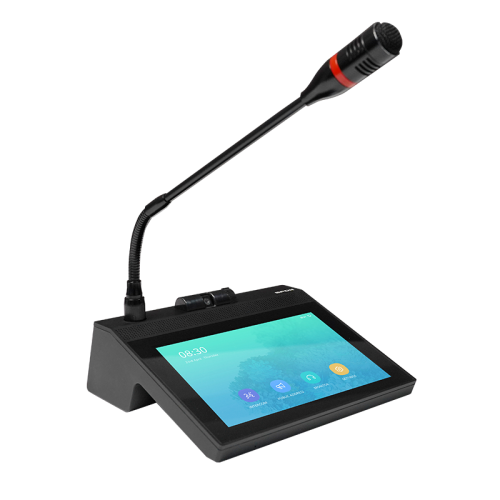Comprehensive Overview to Public Address Equipments
Public address (PA) systems are generally encountered in different jobs such as workplace structures, residential facilities, industrial office complex, colleges, healthcare facilities, train terminals, flight terminals, bus stations, factories, and financial institutions - IP Speaker. This guide will certainly offer a detailed introduction of PA systems

Elements of a System
No matter of the kind of PA system, it generally is composed of four major components: source tools, signal amplification and processing devices, transmission lines, and audio speaker systems.
Source Devices
Music Players: Utilized for history songs.
Microphones: Includes zone-select microphones and conventional microphones.
Voice Storage Space Devices: For keeping organization and emergency broadcast messages.
Signal Handling and Boosting Tools
Audio Signal Processor: Deals with audio signal settlement, depletion, equalization, etc.
Pre-Amplifier: Pre-amplifies audio signals.
Power Amplifier: Intensifies audio signals to drive speakers, supplying continuous voltage result.
Transmission Lines
The service monitoring platform software allows the monitoring center to apply central administration over the program and intercom interaction systems. It helps with online gadget standing tracking, fault diagnosis, and troubleshooting, solidifying system reliability and uniformity.
Speakers
Ceiling Speakers: Indoor, flush-mounted in the ceiling, consistent voltage or consistent insusceptibility.
Wall-Mounted Speakers: Wall-mounted, continuous voltage or constant impedance.
Column Audio Speakers: Free-standing, ideal for exterior or indoor use.
Horn Audio speakers: High sensitivity, suitable for interior or exterior use.
Camouflaged Audio speakers: For outside settings like parks or gardens, developed to appear like rocks, mushrooms, or stumps.
Sound Technical Requirements of PA Systems
In day-to-day settings, normal audio stress levels are:.
• Workplace noise: 50-60 dB.
• Normal discussion: 65-70 dB.
• Textile manufacturing facility noise: 110-120 dB.
• Small quality shooting: 130-140 dB.
• Large jet airplane noise: 150-160 dB.
Signal-to-Noise Ratio (SNR)
SNR measures the ratio of the signal voltage to noise voltage, shared in decibels. A greater SNR suggests much less sound and far better audio top quality. Typically, SNR must go to the very least 63 dB, with high-fidelity speakers reaching over 110 dB.
Input Level of sensitivity
This is the minimum input voltage called for to accomplish the rated output power. Higher sensitivity implies much less input signal is needed. Commonly, power amplifiers have an input level of sensitivity of 0.775 V (0 dB) to 1.5 V (+6 dB).
Maximum Outcome Power (Speakers)
The maximum power an audio speaker can manage simply put bursts without damages.
Rated Power (Speakers)
.
The constant power a speaker can manage without distortion, measured in watts (W) Rated power is an average worth, and speakers can take care of peak power approximately 2-3 times the rated power.
Continuous Voltage vs. Consistent Resistance Outputs
Constant Voltage (70V or 100V)
Utilizes voltage to drive audio speakers, allowing longer transmission ranges and multiple audio speakers in parallel. Nonetheless, sound high quality is a little inferior compared to consistent impedance systems.
Power amplifiers have to match the voltage ranking of the audio speakers to stay clear of damages.
Constant Resistance.
Utilizes existing to drive audio speakers, offering far better audio high quality yet minimal transmission range (approximately 100 meters)
Impedance matching is crucial; for example, an 8Ω amplifier ought to be matched with 8Ω audio speakers.
Selecting and Configuring Audio Speakers
Speaker Choice
Indoor Spaces with Ceiling: Use flush-mounted ceiling speakers without a rear cover.
Indoor Spaces with Only a Framework: Usage ceiling audio speakers with rear covers or hanging ball-type speakers.
Outside Areas: Usage weatherproof column audio speakers or horn audio speakers.
Parks and Gardens: Usage masked speakers developed for visual objectives.
High-End Interiors: Usage elegant dangling speakers.
Fire-Safe Locations: Usage fireproof speakers with sealed styles.
Audio speaker Arrangement
Audio speakers need to be dispersed evenly throughout the service location to ensure a signal-to-noise ratio of a minimum of 15 dB. Typical background noise levels and recommended audio speaker positioning are:.
High-end workplace passages: 48-52 dB.
Big shopping malls: 58-63 dB.
Hectic road areas: 70-75 dB.
Speakers should be positioned to ensure an audio pressure degree of 80-85 dB in a lot of environments. Ceiling speakers need to be spaced 5-8 meters apart, or 8-12 meters for history music only. For emergency situation broadcasts, make certain that no location is more than 15 meters from the local audio speaker.
Amplifier Sizing
Computation Technique:
For service and organization PA systems: P= K1 × K2 × ΣPo where:.
P = Complete amplifier outcome power (W)
K1 = Line loss settlement aspect.
K2 = Aging factor (1.2-1.4)
ΣPo = Total power demand.
For smoke alarm systems, make use of 1.5 times the overall number of audio speakers.
Example Computation:
For a background music system with 10 audio speakers at 20W each: P= 1.26 × 1.2 × 10 × 20W × 0.7= 211W.
Final amplifier ability ought to be 1.3 times this worth: 211W × 1.3= 274W
Installation Needs
Speaker Positioning
Speakers need to be uniformly and strategically dispersed to meet insurance coverage and sound high quality requirements
Power Supply
Tiny PA systems can utilize routine power outlets, while systems over 500W call for a devoted power supply. Power needs to be stable, with automated voltage regulatory authorities if required. The power supply must be 1.5-2 times the equipment's power usage
Wire and Conduit Setup
Usage copper-core cable televisions for signal transmission. Wires ought to be secured and transmitted with appropriate channels, staying clear of disturbance from electric lines. Make sure proper splitting up in between power and signal lines.
Lightning Protection and Grounding
PA systems call for appropriate grounding to prevent damages from lightning and electric disturbance. Usage committed grounding for devices and ensure all grounding actions fulfill security criteria
Setup Quality
Cord and Port Quality
Usage high-grade cables and ports. Make sure links are safe and correctly matched to prevent signal loss or disturbance.
Speaker Connections
Maintain proper phase alignment in between audio speakers. Usage reputable techniques for connecting wires, such as soldering or terminal blocks, and shield links from ecological damages.
Grounding and Security Checks
Verify all grounding is properly set up and inspect the security of power connections and equipment settings. Execute thorough examinations prior to wrapping up the installment.
Checking and Adjustment
Examine the entire system to guarantee all elements operate correctly and meet IP Paging Microphone design requirements. Readjust settings as needed for ideal efficiency.
Workmanship Needs for Public Address Solutions
Building And Construction Quality Requirements
The top quality of building in a public address (PA) system project is crucial to fulfilling style specifications and individual demands. Consequently, it is important to purely comply with the design plans, stick to standards, avoid rework and hold-ups, and maintain comprehensive construction logs. Key locations to concentrate on include:
Cable Choice and Setup
Throughout the construction of a PA system, focus is frequently concentrated on devices, yet the option of transmission wires is also vital for accomplishing adequate audio quality. Top notch broadcasting tools (amplifiers, speakers, etc) is needed, yet the quality of the transmission cable televisions likewise influences audio top quality.
Identical audio speaker cords have inherent capacitance between the cables, which is not ideal for long-distance transmission as it can undermine high frequencies and cause unclear or stifled high noises. Twisted set wires can efficiently overcome this problem and ought to be utilized for long-distance transmission.
Shielded twisted set wires stop electromagnetic interference and boost cord toughness, making them appropriate for long-distance setups. Thicker cables reduce transmission loss yet boost cost and installment problem.
Use balanced links for all signal connections between PA system gadgets, with firm endpoints.
For systems with smoke alarm functions, make use of flame-retardant or fireproof copper-core cords.
Cable televisions should be transmitted with steel conduits or wire trays, and must not share trays with lighting or high-voltage line. Fire alarm system wires need to have fire protection procedures. The bending distance of cable televisions need to be no less than 15 times the wire diameter, and power wires must be separated from signal and control cords. Verify cable television sizes before installment and match them to the design illustrations, reducing wire splices. Use specialized ports and leave adequate cable television size at both ends with clear permanent markings when splicing is required
.

Attaching Audio Speakers and Program Lines
When connecting audio equipment, it's crucial to guarantee phase uniformity between speakers and broadcast lines. Phase interference between speakers can cause considerable variations in sound pressure levels, resulting in unequal sound distribution. Adhere strictly to wiring tags and standardized link techniques.
3 typical link approaches in PA systems are:.
Twisting Approach: Removing insulation from cords, turning them with each other, and securing them with tape or clamps. This method is easy yet might weaken over time.
Screw Terminal Technique: Stripping insulation and inserting wires right into screw terminals, after that tightening up the screws. This technique is frequently utilized.
Soldering Technique: Stripping insulation, twisting wires, and soldering them with each other, after that covering with tape. This method is more trustworthy and appropriate for high-demand or moist atmospheres.
Despite the method, usage tinned cable to facilitate soldering and protect against rust. Use PVC or steel conduit to protect revealed cables from joint boxes to audio speakers.
System Grounding
The PA control area must have both safety and operational grounding. To decrease interference from the power system, different safety and operational groundings need to be established. Advised method is to mount separate copper strips for weak and strong electrical systems in their corresponding upright shafts. This guarantees optimum operation of the weak electric system.
The general grounding resistance must not exceed 1Ω.
Building and construction Assessment
Because of the complexity of PA systems with countless connections and elements, extensive inspection is required. General examinations ought to include:
Safety and security checks of equipment setup.
Confirmation of high-voltage line configurations (IP PA System).
Accuracy of discontinuations and connections
Special interest needs to be offered to device settings, such as resistance matching buttons on audio speakers. Verify that switches are set appropriately to avoid damage. Check the result selection turns on signal source gadgets, setups on signal handling equipment, amplifier connecting buttons, and power supply setups.
As soon as these actions are validated, prepare for tools debugging. Since debugging methods vary based on specific project requirements, they are not covered in detail here.
Quality Records
Certifications, technological requirements, and documentation for speakers, enclosures, transformers, controllers, electrical outlets, amplifiers, sound handling tools, protected cords, and so on.
Pre-installation, concealed examination, self-inspection, and common assessment records.
Records of style changes and last drawings - IP Paging Microphone.
Quality evaluation and evaluation documents for conduit and cord installation
Records of PA system installment and debugging.
Major Setup Needs
Equipment Setup Order
PA system equipment is normally installed in cabinets. For easier systems, a 1.0-meter closet might be sufficient. Area frequently utilized tools like the main broadcast controller on top for very easy access. For even more facility systems with a 2.0-meter closet, position often utilized tools between 0.8 to 1.5 meters for ease
.
Tools Link Order
Connect the computer to the main broadcast controller. Audio lines commonly connect directly to the input of the preamplifier or the first channel of the mixer. The mixer outputs are dispersed to each amplifier, and if using pure power amplifiers, connect to the INPUT audio input. Amplifier outputs after that attach to addressable terminals, area control boxes, or area selectors, and ultimately to the audio speakers
.
Circuitry Factors to consider
For considerable circuitry, different sound and high-voltage line using various manufacturers' cables can aid stay clear of complication. Plan wiring beforehand to avoid missing out on cords, which would require redoing the whole installment.
Power Supply
Utilize a devoted power sequencer for PA systems to make certain consistent power administration and consistent tool startup sequences. The major power supply should consist of a ground line to secure devices and avoid static-related hazards
Tools Selection
Do not count exclusively on appearance; consider customer reviews and market reputation. Products from respectable producers with extensive screening and experience are normally more trusted
Wireless Microphones
For cordless microphones, pick UHF designs for far better range and signal security. For mobile usage, choose headset microphones.
Link Cable televisions
Use strong connections for long life and prevent relying upon adapters, which can trigger loosened connections gradually. Correctly solder links to ensure longevity and convenience of maintenance.
Cupboard Installment
If making use of deep power amplifiers, guarantee the closet measurements (e.g., 600x600mm) work with the devices. Measure cupboard depth and spacing before setup.
Correct preparation, premium tools, and thorough installation and maintenance are essential to accomplishing ideal audio top quality and dependable performance in a PA system.

Speakers ought to be put to make sure an audio stress degree of 80-85 dB in the majority of environments. When connecting audio equipment, it's essential to make sure stage consistency between speakers and broadcast lines. Phase interference between audio speakers can create considerable variations in sound pressure degrees, leading to irregular audio distribution. Amplifier outcomes then connect to addressable terminals, area control boxes, or area selectors, and ultimately to the audio speakers.